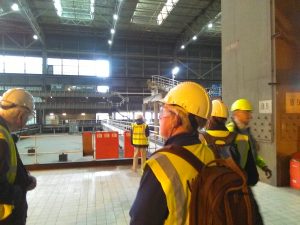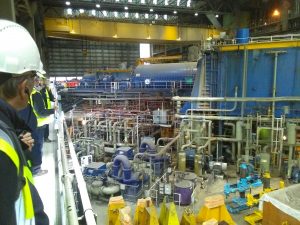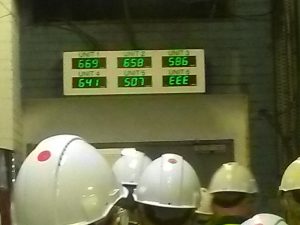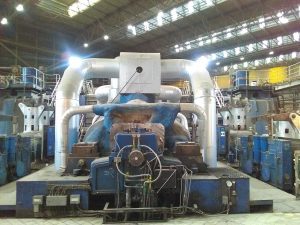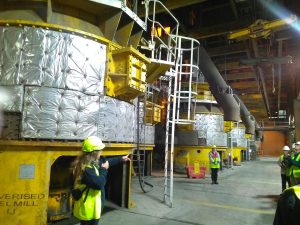
On a good day, the 12 cooling towers and 851-foot main chimney of Drax Power Station are a familiar site on the horizon from the uplands to the west of Sheffield, 35 miles away as the crow flies.
But 28 members and guests of Stumperlowe Probus Club were afforded a much closer look at Britain’s largest power generating facility with a three-hour visit during which we learnt much about Drax’s transition from a coal-powered station, when it was the UK’s largest emitter of carbon dioxide, to a much greener future which could eventually see it producing ‘carbon negative’ electricity, taking more carbon dioxide from the atmosphere than it produces.
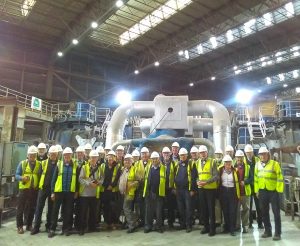
In 2003, Drax took its first steps away from fossil fuel, which had defined electricity generation for more than a century, and began the transfer to biomass fuel as a renewable alternative to coal.
Fifteen years later, three of the station’s six generating units now run entirely on compressed wood pellets, mostly imported from responsibly managed working forests in the United States and Canada, while coal has been relegated to a supporting role to cover spikes in demand and maintain the stability of the system.

Now Drax has converted a fourth unit from coal to biomass, which represents the passing of a two thirds marker for the power station’s coal-free ambitions and represents more than 600 megawatts of renewable electricity going into Britain’s national transmission system. It is the largest decarbonisation project in Europe. Drax supplies six per cent of the country’s electricity and 11 per cent of its renewable power.
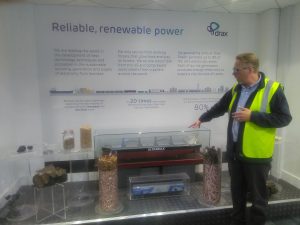
As well as being an important strategic asset nationally, Drax is also vital to the local economy, employing more than 700 people at the plant and supporting 3,650 jobs throughout Yorkshire and the Humber. The economic contribution to the region stood at £419.2 million in 2016.
Drax distribution terminals are located at four ports on the east and west coasts of northern England – Hull, Newcastle, Immingham and Liverpool – routing fuel from ships for onward delivery into the heart of the station by rail. A 12,500-ton shipload of wood pellets will keep Drax’s turbines operating for two and a half days.

Each of the station’s six turbines actually consist of five separate turbines, namely one high pressure (HP), one intermediate pressure (IP) and three low pressure (LP). To produce steam, Drax has six boilers each weighing 4,000 tonnes. They convert energy from biomass or coal into steam at the rate of more than four millions pounds in weight per hour inside 300 miles of steel tubing.
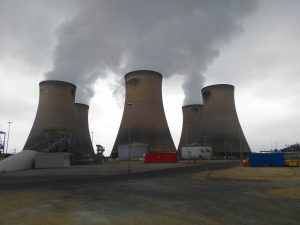
The steam temperature of raised to 568 deg C and the pressure to 166 bar. The boilers operate either continuously or on a daily cycle of morning start-up and night shutdown as required by demand, known as ‘two-shifting.’ Exhaust steam from the 140-megawatt high pressure turbine is returned to the boiler for reheating before being used in the 250mw intermediate pressure turbine at 565 deg C and 40.2 bar. It then passes to the three 90mw low pressure turbines at 308 deg C and 6.32 bar.
The steam strikes and lifts a series of angled blades mounted on the turbine shaft, making it rotate at 3,000 rpm (50 cycles a second). The steam then passes to two condensers and is taken to the 12 cooling towers, two for each of the six generating units.
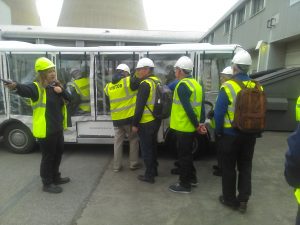
To generate the electricity, an electromagnet on the rotor spins inside a stator (the stationary section) of copper windings, generating 19,000 amps at 23,500 volts. A transformer increases the voltage to a mind boggling 400,000 volts before sending it via cables to the adjacent National Grid sub-station for distribution into our homes, offices and factories.
After an introduction in the ‘learning centre’ where our party was split into three groups and the workings of the power generating process were explained with several scale models, we were kitted out in in hi-vis jackets, plastic helmets and protective eyewear for an outdoor tour of the vast site in electric buggies. Inside the buildings, with the 1,400-foot turbine hall as the centrepiece, we were given headphones to allow us to hear the informative commentary by our guides in the very noisy surroundings.
Our heads were buzzing not only with noise but a slight overload of facts and figures as we peeled off our protective layers and climbed back into the comfort of our coach for the journey home to Sheffield via a lunchtime stop at the Brewer’s Arms in Snaith to round off a most enjoyable day.
